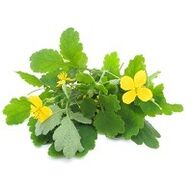
Effective treatment for foot fungus. Foot fungus is a very common disease; according to statistics, at least up to a quarter of all people on Earth suffer from it. The situation is compounded by the fact that most people do not even suspect that they are carriers of the fungus, because it installs and develops inconspicuously.
The fungus brings not only aesthetic and physical inconveniences, but also synthesizes toxic substances that can accumulate in the body and poison it. That's why it's so important to know the ways to prevent and fight this disease to maintain your health. How does the fungus affect the legs and what contributes to it?
Causes of foot fungus
The easy ways for the parasitic fungus to penetrate the skin can be cracks and abrasions between the toes that occur with excessive sweating or, on the contrary, dry feet, all kinds of abrasions from wearing shoes that are too narrow, poor cleaning of the feet after procedures with water . In addition, various endocrine and vascular diseases, varicose veins, diabetes, flat feet, as well as a decrease in immunity or stress can cause a fungal infection.
The fungus is transmitted by close contact with the patient, through objects he used - towel, washcloth, shoes, clothes, manicure devices and even a comb. , as heat and humidity are ideal conditions for the development of the fungus. Once on the nail plate, almost entirely composed of keratin, the fungus begins to grow and multiply slowly. It gradually takes the place of the nail, dissolving it and starting to spread further into the surrounding skin. With a fungal infection, first cracks and peeling form between the toes, and later on, the skin starts to turn red and itchy.
Signs of foot fungus
The characteristic signs of foot fungus are:
- nail darkening
- nail platinum becomes brittle and exfoliates
- the shape of the nail itself is deformed
- pain in the fingertips
- bad smell
Therefore, at the first manifestations of a fungal infection, it is urgent to take measures to combat the fungus in order to prevent its spread along the skin. If the fungus is left untreated, it will move from one nail to another and to areas close to the skin, in very advanced cases, even internal organs are damaged.
If you doubt whether you have a fungus, you can perform this screening test at home: dilute the potassium permanganate crystals in warm water to make a purple solution. Dip your feet in it and hold for a while. The affected areas of the nail will remain clear and the unaffected areas will turn brown.
You can contact a specialist in skin diseases - a dermatologist, who will most likely send you for an analysis - scraping to determine the type of fungus, after which he will prescribe the necessary treatment.
Treatment of folk remedies for foot fungus
You can effectively treat leg fungus using folk methods, especially such treatment can be successful at the onset of the disease. Previously, when there were no such powerful antifungal drugs sold in a pharmacy, people managed and dealt with a fungal infection without using popular recipes:

- Treatment of foot fungus with onion. The easiest way to treat it is with onions. Grate the onion head and squeeze out the juice and grease the fungus affected areas on the legs. When the juice dries, the legs do not need to be washed, the procedure is best done before bed.
- Sea salt. A sea salt solution will help cure the fungus in 10 days. Twice a day - in the morning and in the evening, wash your feet in baths with sea salt (1 teaspoon per 1 glass of water). Then, moisten the cotton in saline solution, apply the cotton to the affected area by the fungus and hold until dry. Then wash your feet with a soda solution (the proportion is the same as a marine solution) and dry your feet.
- With garlic. A good effect is the treatment of foot fungus with garlic salt infusion. Prepare a table salt solution (1 teaspoon of salt is taken per 1 liter of water). Take 1 tablespoon of this solution and add 1 large clove of crushed garlic. Strain and squeeze through cheesecloth, add another 4 tablespoons of saline to the resulting mixture. Lubricate the areas affected by the fungus with the prepared solution 2 times a day. Each time it is necessary to prepare a new solution for the treatment.
- Clay treatment. Clay is another helper for foot ringworm. Dilute clay powder (sold in a pharmacy) with cold water to the consistency of thick sour cream and apply a thick layer to the affected areas, bandage with a linen cloth. You will need to remove the bandage before the clay dries and then rinse your feet with a lemon solution (1 tablespoon of lemon juice in 1 glass of water). Clay lotions should be done at least 2 times a day, and preferably 3 times, each time preparing a new batch of clay.
- celandine juice. In summer, if celandine grows in your country house, you can use the juice of this plant, as it has a strong antifungal effect. It is necessary to uproot the plant, the juice of orange color will appear immediately and lubricate the affected areas with it. Just keep in mind that the procedure is not very pleasant, the itching will be felt, but as the juice is absorbed, it will pass. After a few minutes, grease the area again with juice and do this 3-4 times. You need to repeat the procedure twice a day for a month. In addition, you can prepare celandine oil yourself, which can also be used against foot fungus all year round, not just in summer, when this plant blooms.
- Treatment with celandine compresses. If you have dried celandine herb, grind it into a powder and mix it with tea tree oil to make a thick emulsion. Apply as a compress to the affected areas of the legs daily. Keep doing this until the old fungal nail comes off and a new one grows in its place.
- Propolis. Alcoholic tincture of propolis is an effective and affordable remedy against fungi, you can always buy it at a pharmacy. Possessing antipruritic, anti-inflammatory, bactericidal, regenerating and anesthetic action, propolis is harmful to the fungus. Moisten a cotton swab with 20% propolis tincture and apply it to the affected area, wrap the legs in polyethylene and secure everything with a bandage, the procedure is best done at night. After about a month of treatment, the nail affected by the fungus will come off and a new one will grow in its place.
- Apple vinegar. Apple cider vinegar is another effective remedy for foot fungus, lubricate the affected areas with it several times a day and the fungus will subside. You can do this, for example, by sitting in front of the TV watching your favorite show. Apply a cotton swab moistened with apple cider vinegar to problem areas on your legs and then, when it dries, replace with a new one. Over time, the fungus on the legs will subside.
- Herbal balm. You can prepare a healing antifungal herbal balm: pour 0. 5 liters of sunflower oil into an enamel bowl and add 1 tablespoon of chopped dried herbs: peppermint, comfrey and golden root (Rhodiola rosea). Place on a small fire and heat, but no more than 65 degrees. Turn off the stove and let it ferment for 12 hours, strain. Add oil solutions of vitamins A, E and D to the balm, 1 tablespoon each, mix everything together and lubricate the affected areas with balm at least 2 times a day. You need to store the balm in the refrigerator, the shelf life is not more than six months.
- Birch tar. Birch tar, sold at a pharmacy, is another of the strongest enemies of foot fungus. Lubricate the affected areas on the toes and nails every time after bathing and do not wash afterwards. After several of these procedures, you will not even notice how the fungus will disappear without a trace. Personally, this method has helped me a lot in dealing with foot fungus, which I once caught while visiting the pool.


If someone in your family has a fungus, you need to take precautions so that infection does not occur.
- Until the patient has cured the fungus, he should not walk around the house barefoot, and also sit with his feet on the couch or chairs.
- Before taking a shower, it should be washed well with any liquid product with chlorine, which kills the fungus.
- Scissors, nail files and other items for pedicures and manicures should be cleaned with alcohol.
- If the fungus was found in one of the spouses, he needs to go to bed in clean, pressed cotton socks and change the bedding every week.
- Be sure to treat your shoes by cleaning the insides with apple cider vinegar, 40% acetic acid, or formalin solution.
Prevention of foot fungus
- Never wear someone else's shoes, and when visiting - slippers offered to you. It's best to take a change of shoes with you or go to the room in your socks.
- In the cold season, always change your shoes for replaceable shoes, don't allow your feet to overheat as it is when your feet sweat that the mushrooms start their attack.
- Don't forget to take rubber flip-flops with you when visiting the solarium, swimming pool, sauna, bath or therapeutic baths in the sanatorium. In the bath, pour boiling water over a bench and basin, put a sheet or towel on the shelf, only you can lie down and sit on them.
- Do not walk barefoot in hotels, sports locker rooms, train compartments and other public places, as well as on a slate-free beach. The last precaution is not superfluous, in the hot and humid sand is a breeding ground for fungal infections, it hides many scales and nail fragments infected by fungi.
- Replace bath and shower mats from cloth and sponge to rubber. Moisture stays in your folds, skin flakes and nail fragments get stuck, and a rubber mat can always be easily doused with hot water.
- After showering or bathing, clean your feet well until dry, and especially carefully between your toes so that moisture doesn't stay there and, with it, the chances of fungus settling in.
- Change your socks, stockings or tights every day. Do not allow anyone to use files, manicure tools, sponges, cloths.
- Don't wear the same pair of shoes for more than two days in a row. Let it dry well during the day.
- When shopping for shoes, never try them on barefoot.
- Monitor the condition of your feet, take good care of them - take measures in time for sweating, dryness, calluses and prevent leg cracks.
- If, however, you suspect you might catch a fungus while visiting the pool or beach, when you get home, treat your feet by wiping them with a cotton swab dipped in a 6% table vinegar solution or washing your feet with tar soap.
Observe these precautions, remember that the disease is always easier to prevent than to treat it later.





























